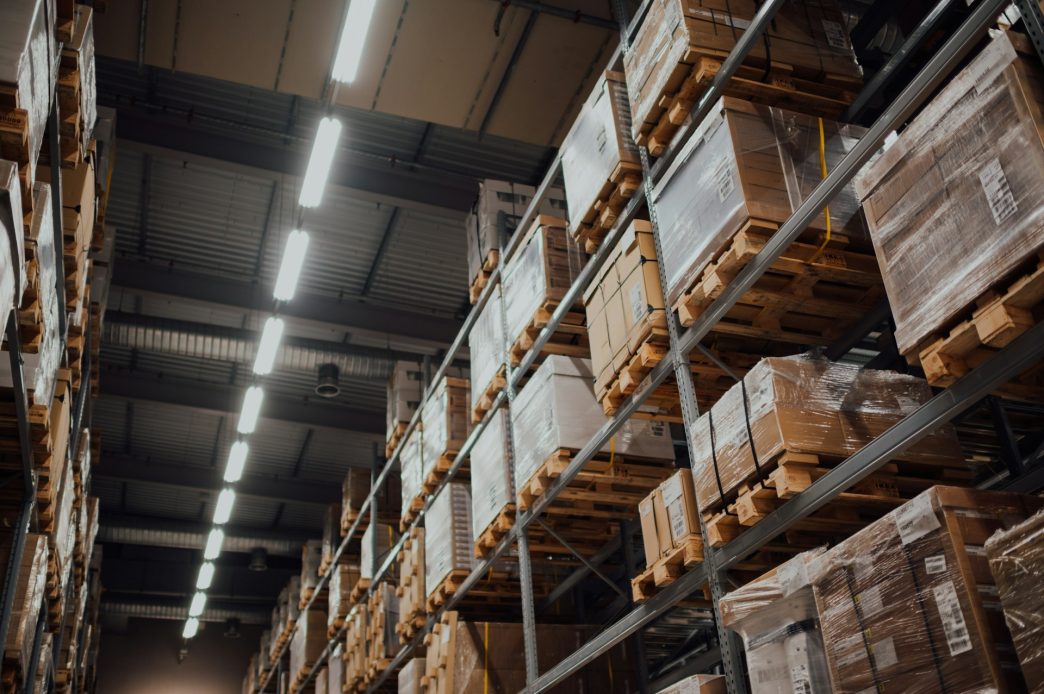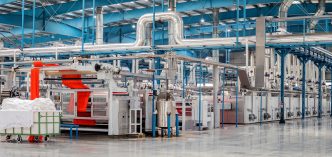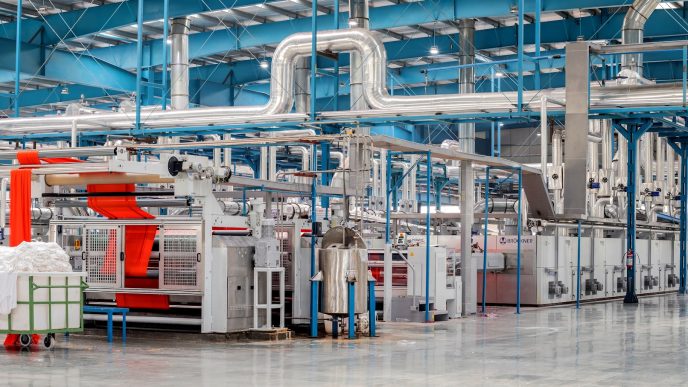Warehouses are under constant pressure to improve efficiency, reduce operational costs, and maintain high product handling standards. One innovation that has significantly impacted warehouse management is automated stretch wrapping machinery. These systems are transforming the way warehouses package goods, enhancing throughput, reducing labour costs, and increasing consistency in packaging. As warehouses evolve, stretch wrapping machinery plays a key role in optimising space, streamlining inventory management, and improving overall operational performance.
The Role of Stretch Wrapping in Warehouse Operations
Stretch wrapping involves using stretch film to securely wrap products, pallets, and loads for transportation and storage. Traditionally, this task was performed manually, with workers physically wrapping products by hand using stretch film. While this method could be effective, it was labour-intensive, time-consuming, and often inconsistent, leading to issues with product protection and inefficient use of space.
Automated stretch wrapping machinery has revolutionised this process by providing a fast, consistent, and reliable way to wrap pallets and products. These machines can handle large volumes of goods much faster than manual methods, improving throughput and reducing bottlenecks in the packing and shipping stages of warehouse operations. Additionally, the machines can be integrated into existing production lines or automated systems, making them a seamless addition to a warehouse’s overall workflow.
Improving Throughput and Reducing Labour Costs
One of the most significant advantages of automated stretch wrapping machinery is its ability to increase throughput drastically. While manual wrapping can be slow and prone to human error, automated machines can wrap pallets at speeds far beyond what a worker could achieve. Some stretch wrapping machines can wrap up to 120 pallets per hour, depending on the size and complexity of the load. This speed translates into faster processing times, enabling warehouses to move goods out the door more quickly and meet tight deadlines.
In addition to increasing throughput, automated stretch wrapping machinery is crucial in reducing labour costs. The need for manual labour to wrap products is significantly diminished, allowing warehouse staff to focus on higher-value tasks, such as inventory management, quality control, and order picking. By automating the wrapping process, businesses can reduce the number of workers required for manual packaging, resulting in cost savings that can be reinvested in other warehouse areas.
Enhancing Consistency and Quality Control
Consistency in packaging is essential in maintaining product quality and ensuring safe transportation. Inconsistent wrapping can damage during transit, as poorly wrapped pallets are more likely to shift, topple, or be exposed to environmental factors such as dust, moisture, or contamination. This can result in costly returns, product loss, and damage claims.
Automated stretch wrapping machinery eliminates these inconsistencies by applying a precise amount of stretch film to each load, ensuring that every pallet is wrapped to the same standard. The machine’s settings can be customised to apply the right tension, number of wraps, and film thickness for each product type, reducing the risk of damage and ensuring the load is securely fastened.
With automation, the chances of human error are also drastically reduced. A worker manually wrapping a pallet might apply uneven pressure, fail to secure the load correctly, or forget to add sufficient film layers. With automated systems, each pallet is wrapped according to the exact specifications set in the machine’s programming, ensuring a consistent and high-quality result every time.
Enhancing Space and Improving Inventory Management
Space is often at a premium in warehouses, where efficient use of available square footage is crucial for maximising storage capacity. Stretch wrapping machinery plays a significant role in optimising the use of space by ensuring that products are tightly secured and stabilised, which allows warehouses to stack pallets higher and more securely. By wrapping goods tightly and uniformly, automated stretch wrapping machines reduce the overall size of the load, allowing for more compact and efficient storage.
In addition, stretch wrapping machinery helps streamline inventory management by improving stock organisation. Wrapped pallets are easier to identify, store, and retrieve from shelving units, making it easier for warehouse staff to locate specific items quickly and efficiently. With consistent, uniform packaging, it is also easier to track stock levels and ensure that goods are properly sorted and categorised. This contributes to a more organised and streamlined inventory management system, reducing the chances of misplaced or lost items and improving overall accuracy.
Another benefit of optimised space usage is that it allows warehouses to store more goods in the same physical footprint, which can help reduce the need for additional storage space. With space being one of the highest operational costs in warehousing, the ability to maximise storage efficiency can significantly impact a warehouse’s bottom line.
Streamlining Supply Chain Processes
Stretch wrapping machinery also plays a pivotal role in improving the overall efficiency of the supply chain. With automated packaging, goods are wrapped and ready for shipment more quickly, reducing delays at the packing stage and enabling faster movement of products throughout the warehouse. This increased speed is particularly beneficial for businesses operating under tight deadlines or in high-demand sectors, such as e-commerce or manufacturing, where speed is of the essence.
Automating wrapping processes also makes it easier to integrate stretch wrapping machinery with other warehouse systems, such as conveyors, automated guided vehicles (AGVs), and warehouse management systems (WMS). This creates a more streamlined and cohesive warehouse operation, where information flows seamlessly from one system to the next, further enhancing efficiency and reducing the risk of errors.
Environmental Benefits of Stretch Wrapping Machinery
In addition to operational and cost-related benefits, automated stretch wrapping machinery can contribute to a warehouse’s sustainability efforts. Modern stretch wrapping machines are designed to use minimal amounts of stretch film while maintaining the necessary level of load stability. This reduces material waste and lowers the environmental impact of packaging processes. Some systems even offer stretch film made from recycled materials, further supporting sustainability initiatives.












